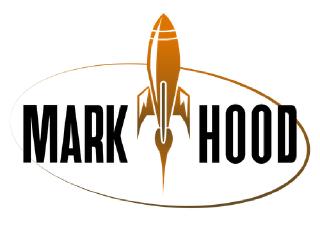Summing up the advice so far.
This is a series of posts - now completed - which you can read in full here:
- Part 1 - Overview
- Part 2 - The First Act
- Part 3 - The Second Act
- Part 4 - The Third Act
- Part 5 - Summary (This article)
I do hope that this very brief introduction to story structure is helpful - for more details I do still absolutely recommend K.M. Weiland’s “Structuring Your Novel” .

If nothing else, do remember the basic breakdown of the three acts:
- Act One: Setup
- Act Two: Conflict
- Act Three: Resolution
Or if you prefer:
- Act One: Put a man in a tree.
- Act Two: Throw rocks at him.
- Act Three: Get him out of the tree.
And it’s certainly worth re-watching the films I picked as examples, with an eye on their structure. Identifying the key moments where the plot points happen will help you in your own story-writing, as you’ll begin to have a natural ‘feel’ for how a story is structured.
Now I can hear the objections already - won’t following a structure like this make my story boring? Won’t people be able to predict the plot points in advance if they know I’ve followed the typical structure? Why can’t I break these rules?
To answer that, I’d point you back at the movie examples I chose (or indeed practically any work of fiction; be it book, movie, comic or play) - and you will see that while they all follow this story arc or structure, they’re all unique. We as people are drawn to stories that follow these structures because so many of the stories we grew up with and are surrounded by every day follow them. They’re innately satisfying, because we start with someone in a situation we can identify with, see them go through struggles and conflicts, and emerge changed. It just feels *right* to us.
Our job as writers is to provide that satisfying structure that guides your reader or viewer through your narrative, while simultaneously hiding the scaffolding that holds your story up. If they see the joins between acts without looking for them, you’re probably not keeping their attention!
And of course you can break the rules - but be warned that it is a lot harder than it looks. Even stories you might be thinking of as examples that do not follow this structure might well do when you look deep enough. Once you do abandon a clear, well-established structure you might well be in art-movie territory, or ‘challenging’ literary fiction. Not to disparage either of these genres, or those who call them home - but if we’re honest with ourselves are we really *satisfied* with those types of storytelling, or just impressed by the achievement?
Once you start looking for this structure, you’ll see it everywhere - and if you need a little help then I can definitely recommend the Story Structure Database which is an ever-expanding list of movies, books and even video games which breaks down the key plot points for each. Obviously this contains spoilers, but here’s a worthwhile exercise…
Take the last book you read, or the last movie you watched, and see if it’s on the list. Before opening the link, try and work out what the key plot points were; remember they are:
Act One - Setup
- Hook - Grabs your attention and keeps you reading /watching
- Inciting Event - The ‘Call to Adventure’ brings the protagonist into the story proper.
- First Plot Point - The key event that forces the hero to continue with the journey.
Act Two - Conflict
- First Pinch Point - Clarification of the stakes and the forces arrayed against the protagonist.
- Midpoint / Second Plot Point - The moment of truth - we think the hero is going to win the day
- Second Pinch Point - A major upset to remind us things are never that straightforward
Act Three - Resolution
- Third Plot Point - The darkest moment for our hero: all seems lost.
- Climax - The final battle, and all is won!
- Resolution - How life has changed since the start of the story.
I think you’ll soon find you naturally pick up these points, and indeed probably already knew about them simply from being surrounded by stories your whole life - even if you couldn’t pin names on them all.
Now go forth and apply these guidelines to your own work in progress, see if it fits the structure and massage as necessary to get it into shape!

![On Story Structure [Part 5 - Summary] On Story Structure [Part 5 - Summary]](/2018/11/26/on-story-structure-part-5-summary/Summary_hu_c5141f9ca13363b1.jpg)